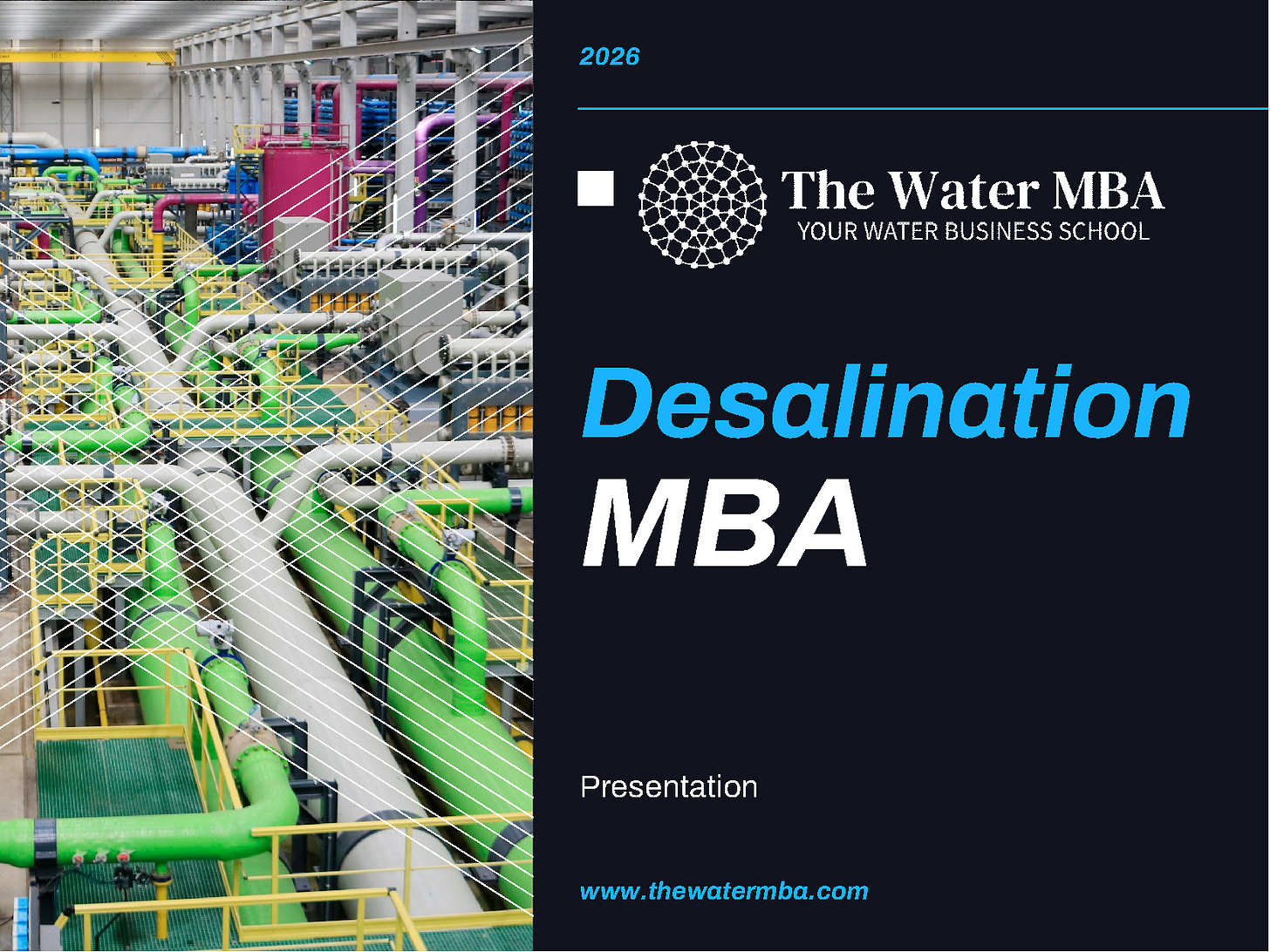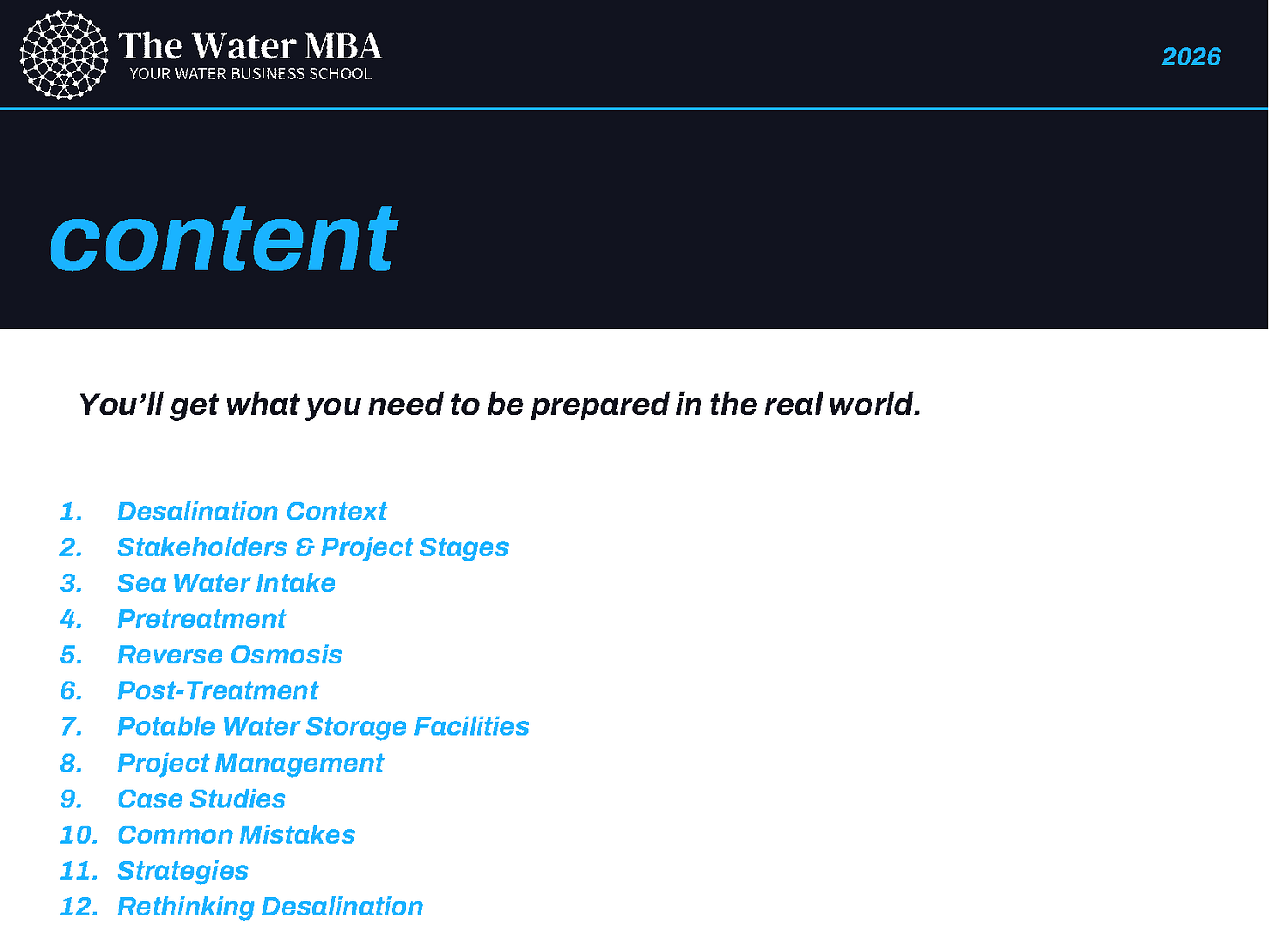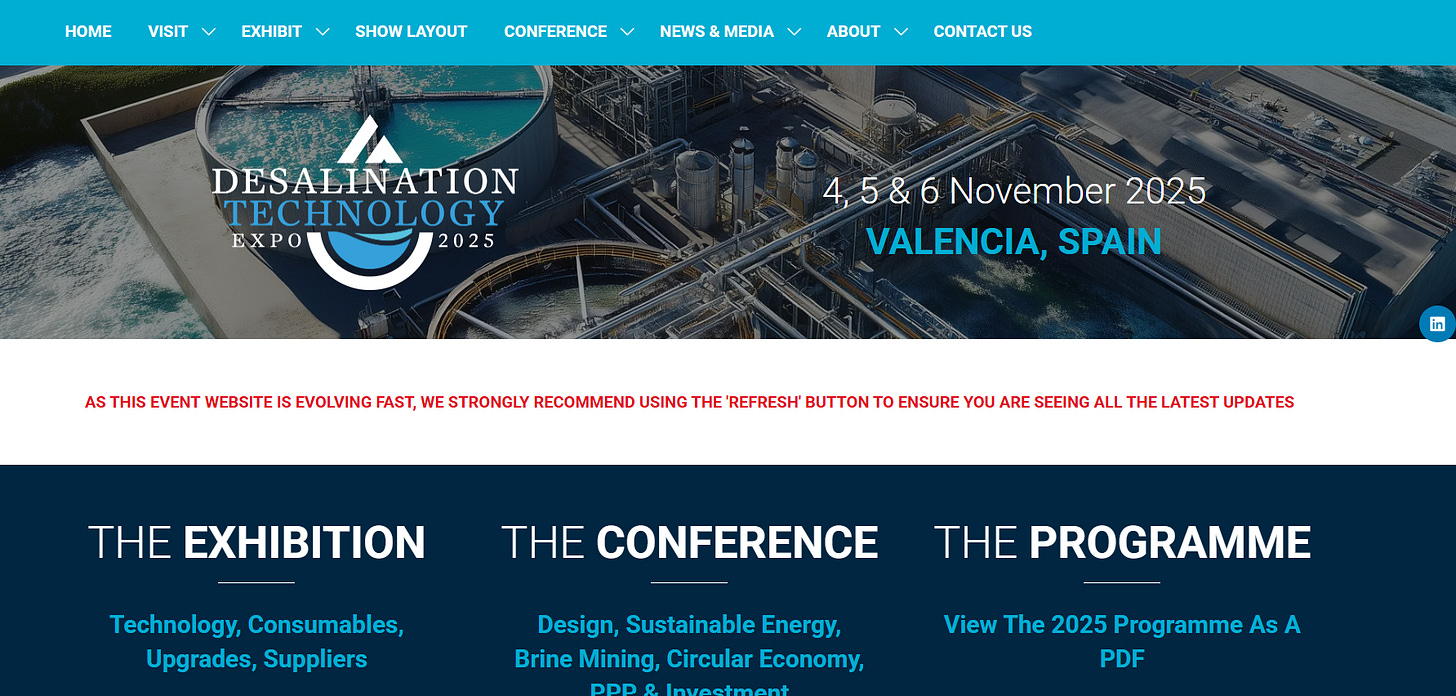Thermoplastic valves in desalination.
From late-night debates on piping to today’s industry shifts, the story of why thermoplastic valves matter in desalination.
I still remember my first encounter with the discussion around thermoplastic valves. It was about eight years ago.
This edition, this week, is sponsored by myself.
Just a quick reminder that this is the open spot for anyone interested in reaching a truly unique global audience—and at the same time supporting our mission to keep creating value.
Here’s the link with more information.
Thank you—truly, thank you—for all the support.
I was sitting with my colleague Antonio Muro, probably not only one of the best piping leads, but also the most complete professional in the desalination world, with cross-field experience unlike anyone else I’ve ever met, when he told me with conviction:
"Ramon, thermoplastic valves are great. They can be used in our projects, and their adoption will only grow in the coming years. Trust me."
We had a project on our hands, and what happened?
As designers, we put forward the valves to the end client—the ones who would ultimately operate the plant for the next 25 years.
Naturally, since they had no prior experience with this type of valve, the typical questions came up: Why not use metallic ones? Isn’t this a downgrade? Are they better or worse than metal valves? What references are there? And so on.
What followed were several days of intense discussions with the consultant (owner engineer) and the client.
Everyone wanted to dig deeper, ask questions, and gain the knowledge and certainty needed to feel confident that these valves could indeed be the right solution for our project as partners.
He was right.
Fast forward to today, and I can confirm that the conversation hasn’t really changed.
As Javier Lorenzo mentions in his recent video, the debates are often the same.
New clients, new people involved, little prior experience…same topics to be discussed.
Which means a lot of time and energy still go into education, explanation, and knowledge-sharing.
That’s why I found this video especially valuable.
In just 30 minutes, it provides a concise yet complete overview of thermoplastic valves, a subject we need to understand not only for the design of desalination projects, but also for long-term operational performance and reliability.
Why thermoplastic valves matter
The presentation, led by GF Piping Systems, focused on solving recurring valve problems in industrial applications. especially in corrosive environments such as seawater desalination.
Traditional metal valves often suffer from corrosion, high maintenance costs, and reliability issues.
Thermoplastics address many of these pain points.
It’s a focused presentation on one specific solution: the GF Butterfly Valve Type 565, with the next key benefits:
Direct replacement: One-to-one swap for metal valves without piping modifications.
Lightweight: 60% lighter than metal alternatives, lowering installation costs and support requirements.
Corrosion resistance: Naturally immune to seawater corrosion.
UV protection: Carbon black protection for outdoor installations.
High performance: Rated PN16, on par with metal valves.
Sustainability: 26% less climate impact (EPD certified).
Multiple certifications: Marine and water industry approvals.
What caught my attention was the rigorous testing.
GF pushed these valves through 100,000+ cycles (ten times the standard requirement), with real-world case studies showing performance beyond expectations: no leakage, no torque drift, no material degradation even after years in operation.
Behind the scenes
Here’s the truth: there’s already a lot of good knowledge out there.
The problem is that it often gets lost, buried in the noise of social media or scattered across presentations that never reach the right people.
So I spoke with Javier after watching a webinar from the company, the video really struck me as outstanding.
I told him: “Javier, why don’t we take this video, put it on our platform, give it a new angle, approach it from different perspectives, and share it with the community? There are so many people interested in desalination, and I know this topic keeps coming up in every project. I believe this can help everyone involved—not only you and us, but especially the audience, because it gives them the knowledge they need to discuss with a client, with a consultant, or even to optimize their own designs for a more sustainable long-term solution.”
Javier and his team had no hesitation, and that’s why the video is here today.
I love this kind of collaboration, it gives valuable knowledge a second life and brings an innovative way of making it more accessible.
Not only do we get access to real solutions for real problems, but the quality of production also makes the learning experience more engaging.
So thank you, Javier and GF, for trusting our business school and community.
What’s next for Unfiltered
I plan to follow up with a detailed analysis of where thermoplastic valves should—and shouldn’t—be used in desalination projects.
As you may guess, they’re not intended for the high-pressure side of RO systems, but there are plenty of other places where they can make a big difference.
Every project is a unique story, and of course you should always check directly with Javier and the GF team for specifics.
But I believe this guidance can give us a clearer picture of where the industry is heading.
Because in the end, just like Antonio told me years ago, it’s not about whether these valves will play a role. They already are.
I tried and failed, but I will keep trying
I find the world behind the water-food nexus and the goal of food security particularly interesting.
Trying to follow this approach of hosting high-quality third-party content that can spark our community’s curiosity and enrich their learning experience, and building our own Water Netflix to host series and movies about water in the future, I came across a really, really interesting movie released not long ago, named “The Grab”, recently awarded with an Emmy for best reporting, precisely about the topic I was researching.
I didn't hesitate and contacted Nathan Halverson, as I wanted to temporarily host the movie on our platform. He said it could be great, and put me in contact with the person in charge of licenses.
To help you understand, a license is a fee that you pay to the movie owner, based on how long you'll showcase the movie and its location.
Making it available in one country is not the same as making it available to the rest of the world.
It seems that wasn't possible, as finally replied, "My apologies, we are not able to move forward on a license. We have another contract in place that requires exclusivity over educational streaming."
If you're reading this from the U.S., you're in luck! I think the movie is available at least on Amazon Prime Video.
This is another example of the barriers I find when trying to share knowledge and make it accessible to those who are interested.
There's really good stuff out there, but for one reason or another, it's not easy for everyone to access, even when paying for it.
As proven in our episode with GF, I will keep trying to find partnerships and collaborations in which we can make high-quality audiovisual content more visible.
Everybody wins, especially those who will have the opportunity to learn from it.
Desalination MBA
On Tuesday, I’ll officially announce the Register of Interest for joining our Desalination MBA course, a Video On Demand journey into the world of desalination, not from a purely academic perspective, but from the practical one that is essential to understand real-world challenges and solutions.
This is a highly time-consuming project, but the content is already being developed.
However, payments will only begin once we reach a minimum cohort of 8–10 professionals.
At the moment, we already have two confirmed expressions of interest, just from people exploring our website.
I believe LinkedIn will help us attract the rest.
I’m confident this shall be probably the best course you can find in the world.
Desalination Technology Expo 2025
I’ll be attending the Desalination Technology Expo, representing IWAC.
On Tuesday, I’ll be moderating a few panels in Room A.
My goal is to explore new developments in the market, assess potential collaborations for our ongoing projects, and discuss how we can best support clients.
I’m also particularly curious about learning more about brine valorisation, and I’d be glad to meet some of you in person, if you’re attending, feel free to drop me a message.
Final quote
Just a reminder that we should all support and uplift others, not just to gain more ourselves, but because our duty, at least here at The Water MBA, is to cultivate more leaders in our industry who can drive positive change in their own ecosystems and, in turn, across our entire sector.
This quote emphasizes that true leadership isn’t about accumulating power, control, or a large number of people who simply follow instructions.
Real leaders focus on empowering others to think, act, and lead independently.
A leader’s impact multiplies when they inspire and train others to take initiative, make decisions, and create positive change in their own spheres.
By developing new leaders, you create a ripple effect that strengthens teams, organizations, and even entire industries.
“The function of leadership is to produce more leaders, not more followers.” — Ralph Nader




